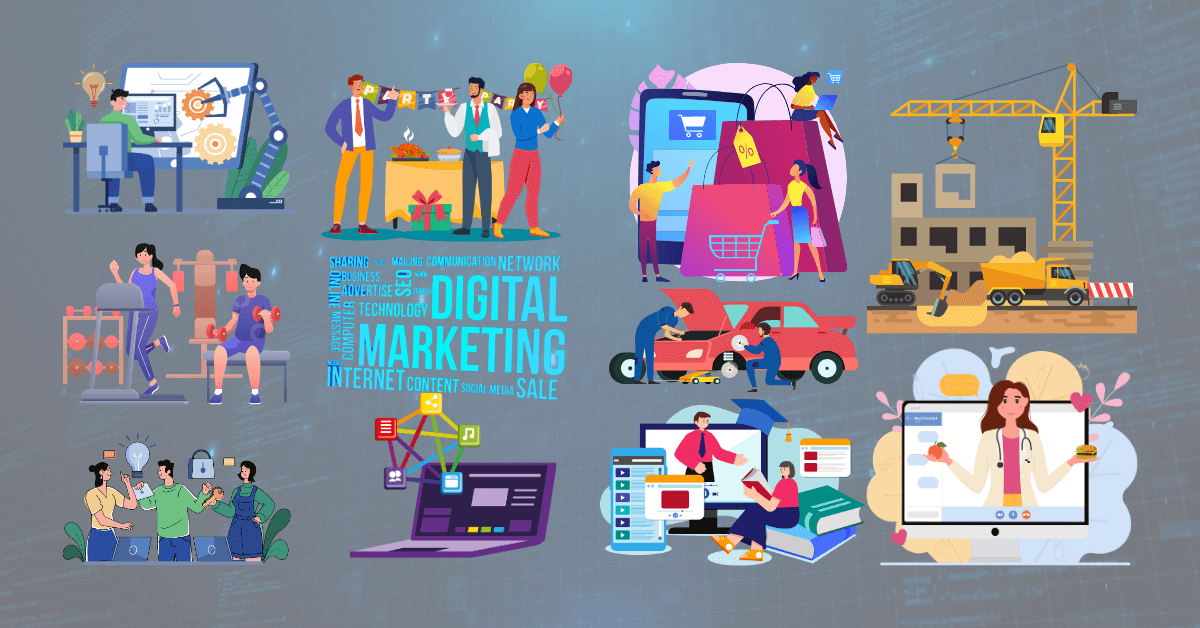Contents
Building website in 2025
Your website is your online storefront, your 24/7 salesperson, and your digital handshake with the world. In today’s competitive landscape, simply having a website isn’t enough; it needs to be user-friendly, visually appealing, and optimized for conversions.
This guide will walk you through the essential elements of website development, incorporating the latest trends and best practices for 2025 and beyond.
1. Planning and Strategy
Before diving into design and development, you need a solid plan.
- Define your goals: What do you want your website to achieve? Generate leads? Drive sales? Increase brand awareness?
- Identify your target audience: Who are you trying to reach with your website? What are their needs and interests?
- Determine your content strategy: What type of content will you feature on your website? Blog posts? Product pages? Videos?
- Choose a domain name: Select a memorable and relevant domain name that reflects your brand.
- Select a website platform: Choose a platform that suits your needs and technical expertise (e.g., WordPress, Wix, Squarespace).
2. Design and User Experience (UX)
Your website’s design and user experience are crucial for engaging visitors and keeping them on your site.
- Mobile-first approach: Design your website with a mobile-first approach, ensuring it looks and functions flawlessly on all devices.
- Intuitive navigation: Make it easy for visitors to find what they need with clear menus, a search bar, and logical page structure.
- Visually appealing design: Use high-quality images, a consistent color scheme, and a clean layout to create a positive first impression.
- Accessibility: Ensure your website is accessible to people with disabilities by following accessibility guidelines.
3. Content and SEO
Your website’s content should be informative, engaging, and optimized for search engines.
- Keyword research: Identify relevant keywords that your target audience is using to search for businesses like yours.
- On-page optimization: Optimize your website’s content, title tags, meta descriptions, and header tags with your target keywords.
- Content marketing: Create valuable content that attracts and engages your target audience, such as blog posts, articles, videos, and infographics.
- Link building: Build high-quality backlinks to your website from other reputable sources.
4. Development and Technology
The development phase brings your website to life.
- Coding: Use HTML, CSS, and JavaScript to build your website’s structure, style, and functionality.
- Content management system (CMS): If you’re using a CMS like WordPress, familiarize yourself with its features and functionalities.
- Database integration: If your website requires a database (e.g., for e-commerce), ensure proper integration and data management.
- Security: Implement security measures to protect your website from cyberattacks and data breaches.
5. Testing and Launch
Before launching your website, thorough testing is essential.
- Functionality testing: Test all website features and functionalities to ensure they work as intended.
- Compatibility testing: Test your website on different browsers and devices to ensure cross-compatibility.
- Performance testing: Test your website’s loading speed and performance under different traffic conditions.
- Security testing: Conduct security testing to identify and address any vulnerabilities.
6. Post-Launch and Maintenance
Once your website is live, the work doesn’t stop there.
- Website analytics: Use tools like Google Analytics to track website traffic, user behavior, and conversions.
- Content updates: Regularly update your website’s content to keep it fresh and relevant.
- SEO monitoring: Monitor your website’s search engine rankings and make adjustments to your SEO strategy as needed.
- Technical maintenance: Perform regular technical maintenance to ensure your website’s security and performance.
Future Trends in Website Development
- Artificial intelligence (AI): AI-powered chatbots, personalized content recommendations, and
- automated website design.
Progressive web apps (PWAs): PWAs offer a native app-like experience with the flexibility of a website. - Voice search optimization: Optimizing website content for voice search queries.
- Augmented reality (AR) and virtual reality (VR): Creating immersive website experiences using AR and VR technologies.
Conclusion
Website development is an ongoing process that requires careful planning, creative design, and technical expertise. By staying informed about the latest trends and best practices, you can create a website that not only looks great but also effectively achieves your business goals.
Frequently Asked Questions (FAQ) About Website Development in 2025
Website design trends in 2025 include AI-driven personalization, 3D interactive elements, minimalistic layouts, and immersive scrolling experiences.
Google prioritizes mobile-first indexing, meaning websites must be fully responsive and provide seamless experiences on all devices.
SEO-friendly websites use optimized content, fast loading speeds, structured data, mobile responsiveness, and secure HTTPS connections.
Fast-loading websites reduce bounce rates, improve engagement, and rank higher in search engine results, leading to better conversions.
Core Web Vitals measure page speed, interactivity, and visual stability, directly affecting user experience and search rankings.
WordPress remains the most popular CMS, while Shopify is best for eCommerce, and Webflow is great for design flexibility.
Using HTTPS, regular security updates, strong passwords, and firewalls protects websites from cyber threats.
AI enhances user experiences with chatbots, automated design suggestions, and personalized content recommendations.
Hosting providers like SiteGround, Cloudways, and Kinsta offer fast loading speeds, strong security, and reliable uptime.
Following WCAG guidelines, using alt text for images, and adding keyboard navigation improve website accessibility.
Shopify, WooCommerce, and Magento are popular eCommerce platforms offering flexibility, scalability, and SEO optimization.
Clear, intuitive navigation helps users find information quickly, improving engagement and reducing bounce rates.
Regular updates, including content refreshes, security patches, and design improvements, ensure a website remains relevant and secure.
Implementing HTTPS, regular software updates, strong passwords, and firewalls enhances website security.
Cloud hosting offers scalability, high uptime, improved speed, and better security compared to traditional hosting.
Page speed, mobile-friendliness, keyword optimization, high-quality backlinks, and structured data enhance website SEO.
Using clear CTAs, A/B testing, fast-loading pages, engaging content, and optimized landing pages increases conversions.
Shared hosting is cost-effective but slower, while dedicated hosting provides better performance and security for high-traffic websites.
Caching stores frequently accessed data, reducing load times and improving overall website performance.
Accessible websites cater to all users, including those with disabilities, improving usability and SEO rankings.
Websites provide static content, while web applications offer interactive features like user logins and real-time updates.
Properly timed pop-ups improve lead generation, but excessive pop-ups can frustrate users and increase bounce rates.
A CDN distributes website content across multiple servers worldwide, reducing load time and improving security.
A clean, well-structured layout with easy navigation, engaging visuals, and clear CTAs boosts user engagement.
Using targeted keywords, optimizing meta tags, and creating valuable, high-quality content improves search rankings.
Subtle animations improve user experience, while excessive animations can slow down the website and affect SEO.
AI-powered chatbots improve customer support, providing instant responses and enhancing user experience.
A/B testing helps businesses optimize elements like headlines, images, and CTAs for better conversions.
Translating content and adapting website elements for different regions improves global accessibility and audience engagement.
The future includes AI-driven personalization, voice-activated navigation, immersive AR/VR experiences, and improved cybersecurity measures.






